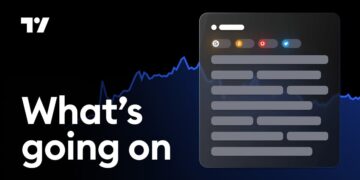Did the market’s stiff upper lip finally waver on Friday, as a characteristic rush to buy a morning dip failed by the close in the face of air attacks between Israel and Iran? Things will have to slacken a bit more from here to draw this conclusion, given that the S & P 500 lost only 1.1% on the day and 0.4% for the week, not even retreating as far as where it sat before the monthly jobs report the prior Friday. The index didn’t quite touch its 20-day average at the week’s low, a very short-term trend line that can often act as support or, if breached, a tripwire to suggest buyers are loosening their grip on the tape. Even a further 3% setback in the index from here would be blandly routine as part of an overall market advance, though it might be accompanied by some vexing headlines. These are some pretty narrow-scale points of reference, granted. But they matter in part because the behavior of this rise-and-grind market itself has been among the strongest elements of the bull case for stocks. The S & P has been riding one of the strongest-ever rebounds from a 15%-plus correction, keeping pullbacks minimal and showing uncommon intraday strength backed by an active buy-on-weakness reflex. Bespoke Investment Group calculates that the S & P 500’s average performance on days after a daily decline is the highest in at least 33 years, narrowly surpassing the 2020 average. Between this impulse, the unmistakable strength in foreign equity markets, the unwavering steadiness in credit conditions and the reinforced conviction in the AI spending theme, the array of positive characteristics can’t be negated by a 1.1% drop on conflict in a region that’s rarely been free of conflict for long. It helps that Brent crude oil’s 7% surge Friday and 12% jump on the week came from such unthreatening levels that the move merely took it to the bottom of what had been a two-year range until three months ago. @LCO.1 mountain 2023-06-13 Brent crude futures, 2-years Of course, giving the market credit for hanging tough against scary headlines means assuming its modest decline so far reflects genuine resilience rather than investor complacency. This is a fair premise for now, given investor survey and positioning stats that are not showing excess confidence. In fact, this jolt of open-ended geopolitical risk could be just the thing to keep investor expectations in check after a run of some frisky first-day IPO gains by Circle , Voyager and Chime in recent weeks, not to mention a rally in the Van Eck Social Sentiment meme-stock ETF (BUZZ ) to a new record high mid-week. Still, the recent action does highlight the way investors have taken to pricing in benign resolutions to the many unknowns in the outlook. The market is now positioned for further cooling of trade frictions, raising the bar for what is considered progress well beyond what last week’s vague and contingent detente between the U.S. and China could meet. Feeling heavy Is it notable, too, that decidedly cooler-than-expected inflation readings in the CPI and PPI reports on successive days last week failed to give the equity indexes much of a boost? Perhaps because the Street assumes an eventual tariff-inflation effect? Or because weak pricing power hints and waning demand that would turn the backdrop from Goldilocks’ “just right” to Mama Bear’s “too cold?” Look closely enough and parts of the market were looking a bit heavier. The climb had slowed, and the daily ranges narrowed ahead of Friday’s air pocket. The equal-weighted S & P 500 is still almost 6% off its record high, twice as far as the headline index is. And some erratic vibrations were detected at points last week as the stark outperformance of year-to-date laggards over the top 2025 performers prompted some comparisons to the nasty momentum-stock reversal of February and March that upset the market well before the tariff panic. Goldman Sachs equity trading desk on Tuesday flagged the sudden burst higher in popular short positions and setback in big winners: “Starting to feel some similar tremors underneath the surface in terms of the recent market price action.” Still, the rotation has stayed orderly, and doesn’t appear too destabilizing at this point, as seen here. Somewhat ironically, the better the macro data start to look, the more risk of a messy rotation from the momentum leaders into the weaker names. Such shifts tend to run from mega- to small-cap, growth into value, crowded to neglected. Consequential July I’ve been pointing to July as a time when some consequential cards should turn over for investors. The initial 90-day tariff “pause” will lapse (though Treasury Secretary Bessent last week dangled the prospect of prolonging the suspense if negotiations are proceeding in “good faith.”) The big budget bill faces some Congressional deadlines. Perhaps the macro data will tip in one direction enough to make the end-of-July Federal Reserve meeting a live one. And July is about when seasonal tailwinds abate (on average). Meantime, second-quarter earnings hitting in July will have much to say about the viability of second-half forecasts. On the earnings trajectory, it’s notable that estimates have degraded for the current quarter and next – and yet they also did so the past two quarters, before the projections were emphatically trounced by reported results, as this chart from HSBC illustrates. Mid-year is also a time for market handicappers to update their best guesses on where things go from here. Several Wall Street strategists have raised index targets which many had dropped in the spring, as the rebound rally made them appear a bit too pessimistic. Ed Clissold, U.S. equity strategist at Ned Davis Research, freshened his S & P 500 target on Friday, using a composite of several fundamental, cyclical and technical models to arrive at a 6350 bogey for the end of the year, up about 6% from here. Key inputs to this call include the tendencies of mature bull markets, some likely profit-margin slippage from tariffs, moderating earnings gains and the chance that the Fed will resume rate cuts in coming months. This would represent a healthy but hardly heroic performance from here for an index that has charged higher since early April and yet is only around 5% above its midsummer peak 11 months ago, at a moment of euphoric release in that often-mercurial month of July.
Middle East conflict barely rattles resilient stock market
Recent Posts
- Minnesota lawmaker killed on Saturday served with compassion, governor says
- Ethereum Whales Ramp Up Accumulation By 1.50 Million ETH — Incoming Price Boom? — TradingView News
- IBM’s New Quantum Roadmap Brings the Bitcoin Threat Closer
- Boeing trims projection for 20-year jet demand
- Ethereum Open Interest Hits $20B as Bulls Gear Up for Breakout

© 2025 - Market News Board
















